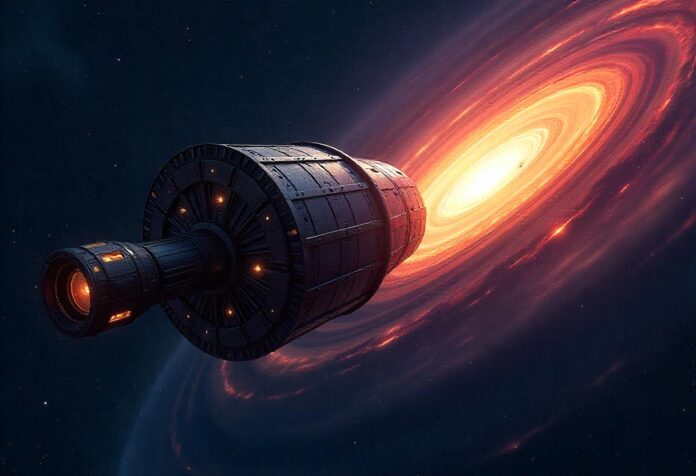Unlocking Cosmic Mysteries with NASA’s Roman Space Telescope
NASA’s Nancy Grace Roman Space Telescope is set to transform our understanding of the universe’s most enigmatic component: dark matter. By harnessing the natural phenomenon of cosmic lenses, Roman will help unravel how invisible structures have shaped galaxies—and by extension, the entire cosmos. This revolutionary endeavor paves the way for breakthroughs in both astronomy and particle physics.
Understanding Cosmic Lenses and Gravitational Lensing
Gravitational lensing, often referred to as a cosmic lens, occurs when massive objects such as galaxies or dark matter clumps bend the light from more distant sources. Because the gravity of these objects distorts the path of light, the shapes of background galaxies appear warped. Therefore, this effect creates a natural telescope that astronomers can use to detect and map dark matter, which remains invisible to conventional instruments.
The Roman Telescope’s Breakthrough Approach
Most importantly, the Roman Telescope employs a sophisticated method known as weak gravitational lensing. This technique involves tracking subtle distortions in the images of distant galaxies. Because Roman offers an unprecedented panoramic field of view and sharp resolution, it will enable scientists to:
- Examine slight distortions in the shapes of hundreds of millions of galaxies.
- Detect anomalies in stellar streams—especially those emerging from globular clusters—that may be influenced by unseen dark matter clumps.
- Create comprehensive maps that detail the distribution of both normal and dark matter across the cosmos.
This innovative approach is expected to fill in critical gaps in our understanding of how dark matter governs the formation and evolution of galaxies.
Robust Engineering and Testing: Ensuring Mission Success
Because every component must perform flawlessly in space, recent engineering tests have been crucial. For instance, core components of the Roman Space Telescope passed a major shake test, confirming their durability under extreme conditions. As detailed by NASA, these rigorous tests are fundamental to ensuring that Roman can operate flawlessly once deployed. Most importantly, such tests assure both scientists and the public that the mission is built to endure the stresses of launch and space travel.
Peering Back in Time and Unveiling the Dark Universe
Besides that, Roman’s sensitive instruments will allow it to look deep into the past, capturing the evolution of galaxies and clusters over cosmic time. Because dark matter plays a pivotal role in the early stages of galaxy formation, the telescope’s findings will enable scientists to test various theories regarding its composition and behavior. For example:
- If dark matter consists of heavier, slower particles, early galaxy formation would be more pronounced.
- If it is composed of lighter, faster-moving particles, the timeline for structure formation would be significantly delayed.
These comparative studies are essential, because they can narrow down the properties of dark matter and guide direct detection experiments on Earth. As described in detailed plans shared by NASA (NASA’s Roman Mission Details), this mission strives to answer some of the most fundamental questions regarding our universe.
Exploring Stellar Streams as Clues to Hidden Matter
In addition, one ingenious aspect of Roman’s investigation involves the study of stellar streams. These streams, which are elongated trails of stars stripped from globular clusters, often exhibit mysterious gaps or disruptions. Because such features may be caused by small clumps of dark matter passing through, scientists are hopeful that a careful analysis of these streams will reveal new insights into dark matter’s distribution. Therefore, mapping these stellar streams not only helps quantify dark matter but also enhances our understanding of its interactions on small cosmic scales.
A Data Torrent and Its Impact on Future Discoveries
Roman is designed to do more than just observe—it is set to deliver an unprecedented amount of data. Most importantly, its wide field of view coupled with high-resolution imaging will generate a colossal dataset encompassing observations of hundreds of millions of galaxies. This powerful data torrent, available for researchers worldwide, will accelerate breakthroughs across cosmology and space science. Because such datasets provide the basis for robust statistical analysis, they are an invaluable resource for the next generation of astronomical research.
Shaping the Future of Dark Matter Research
As we look towards the Roman Space Telescope’s launch and subsequent mission milestones, excitement and anticipation continue to build. Besides that, the mission also integrates technological advancements proven on the ground with inspiring engineering feats, such as achieving stability in harsh environments (NASA’s Shake Test Report). Therefore, Roman is not only set to redefine our cosmic maps but also to inspire future explorations into the nature of dark matter and the underlying skeleton of the universe.
Looking Further Ahead: Broader Implications and Future Research
Looking forward, Roman’s discoveries are likely to influence a wide spectrum of research areas—from the dynamics of galaxy clusters to potential insights into the dark energy driving the expansion of the universe. Most importantly, Roman’s detailed mapping of dark matter will provide a framework for subsequent missions. Researchers can build upon this foundational data to refine cosmological models and further explore physical phenomena that have long eluded human understanding. Additional insights can be found on NASA’s Roman mission website and other scientific releases.
Conclusion
In conclusion, NASA’s Roman Space Telescope is poised to advance our understanding of the cosmos by clarifying the role of dark matter through innovative techniques such as gravitational lensing. Because of its robust engineering, meticulous testing, and groundbreaking observational strategy, Roman will transform how we perceive the universe’s hidden structure. With its comprehensive dataset and forward-thinking research plans, this mission promises not only to answer longstanding questions about dark matter but also to pave the way for future explorations in the cosmic frontier.
References:
- NASA Science – Dark Matter
- NASA’s Roman to Search for Signs of Dark Matter Clumps – STScI
- NASA’s Roman Mission Detailed Plans
- Core Components Shake Test – NASA



